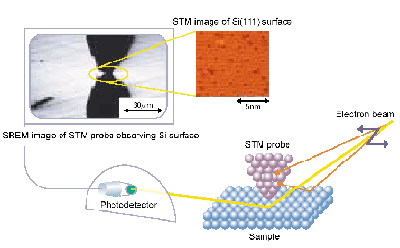For the fabrication of electronic and optical devices in the 21st century, the topographic structures of surfaces after various processes such as ultraprecision machining, thin-film growth and wet cleaning must be measured in the wide range of spatial resolution from meters to nanometers.We have to evaluate the flatness, crystallinity and defects of such surfaces.For example, various nanometer-scaled functional devices must be guaranteed to operate perfectly on a Si wafer (φ=300mm).Furthermore, the atomic-scale control of surfaces structures in a large area is required for optical devices such as highly accurate X-ray mirrors. |
 |

